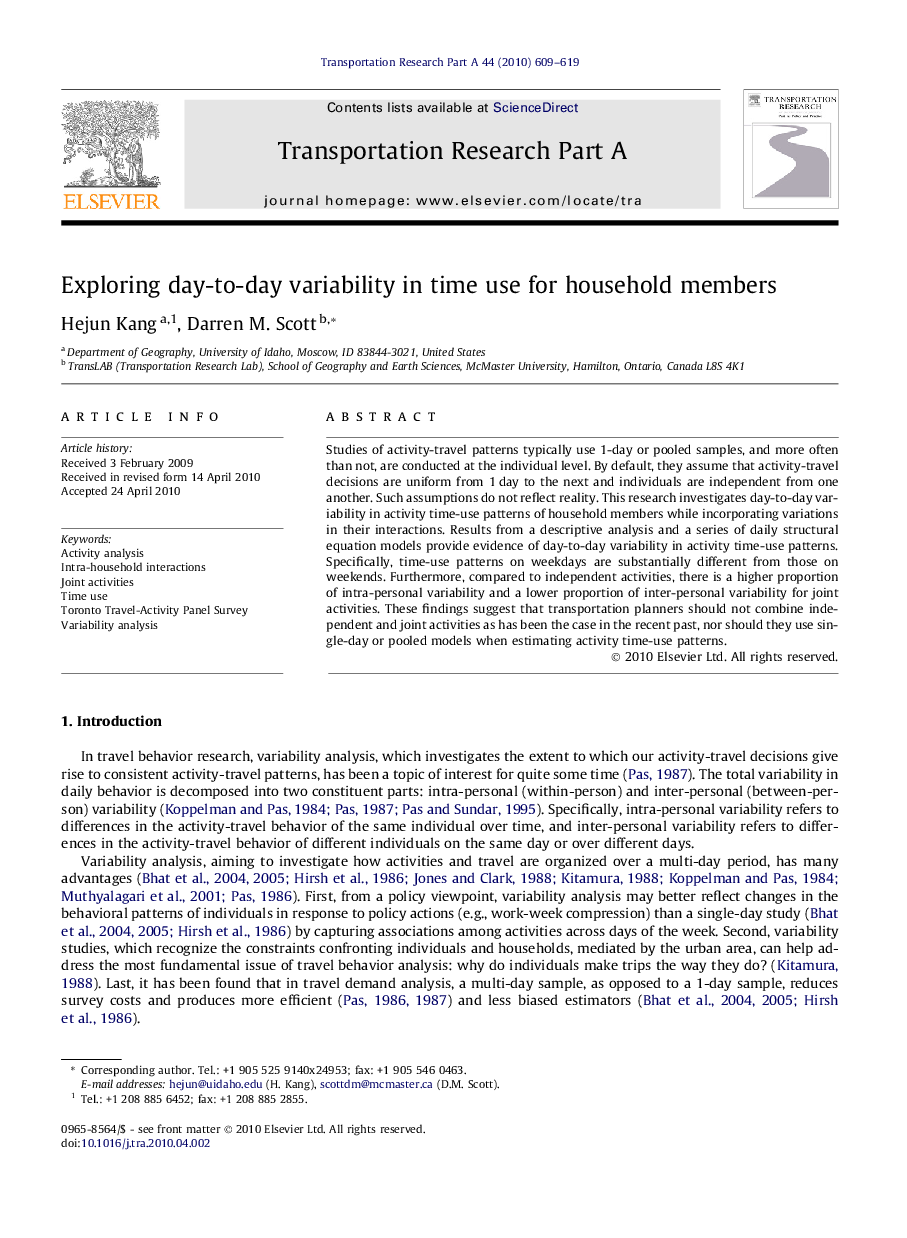| Article ID | Journal | Published Year | Pages | File Type |
|---|---|---|---|---|
| 312306 | Transportation Research Part A: Policy and Practice | 2010 | 11 Pages |
Studies of activity-travel patterns typically use 1-day or pooled samples, and more often than not, are conducted at the individual level. By default, they assume that activity-travel decisions are uniform from 1 day to the next and individuals are independent from one another. Such assumptions do not reflect reality. This research investigates day-to-day variability in activity time-use patterns of household members while incorporating variations in their interactions. Results from a descriptive analysis and a series of daily structural equation models provide evidence of day-to-day variability in activity time-use patterns. Specifically, time-use patterns on weekdays are substantially different from those on weekends. Furthermore, compared to independent activities, there is a higher proportion of intra-personal variability and a lower proportion of inter-personal variability for joint activities. These findings suggest that transportation planners should not combine independent and joint activities as has been the case in the recent past, nor should they use single-day or pooled models when estimating activity time-use patterns.
